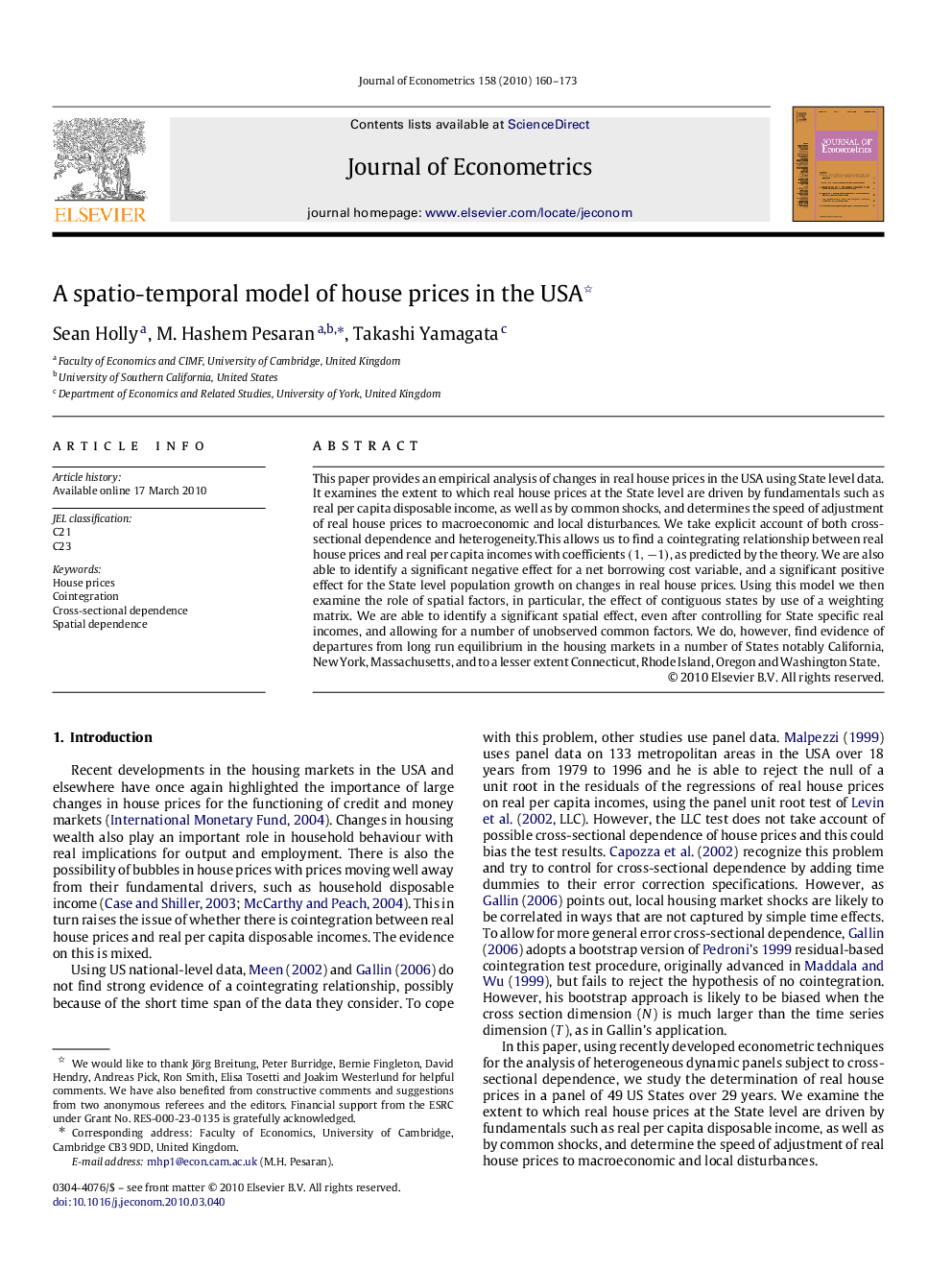| Article ID | Journal | Published Year | Pages | File Type |
|---|---|---|---|---|
| 5096903 | Journal of Econometrics | 2010 | 14 Pages |
Abstract
This paper provides an empirical analysis of changes in real house prices in the USA using State level data. It examines the extent to which real house prices at the State level are driven by fundamentals such as real per capita disposable income, as well as by common shocks, and determines the speed of adjustment of real house prices to macroeconomic and local disturbances. We take explicit account of both cross-sectional dependence and heterogeneity. This allows us to find a cointegrating relationship between real house prices and real per capita incomes with coefficients (1,â1), as predicted by the theory. We are also able to identify a significant negative effect for a net borrowing cost variable, and a significant positive effect for the State level population growth on changes in real house prices. Using this model we then examine the role of spatial factors, in particular, the effect of contiguous states by use of a weighting matrix. We are able to identify a significant spatial effect, even after controlling for State specific real incomes, and allowing for a number of unobserved common factors. We do, however, find evidence of departures from long run equilibrium in the housing markets in a number of States notably California, New York, Massachusetts, and to a lesser extent Connecticut, Rhode Island, Oregon and Washington State.
Related Topics
Physical Sciences and Engineering
Mathematics
Statistics and Probability
Authors
Sean Holly, M. Hashem Pesaran, Takashi Yamagata,
